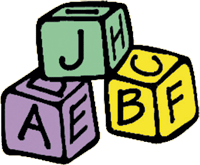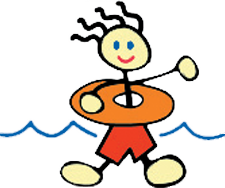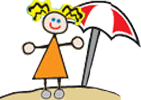Developmental Milestones for Babies
Your baby is perfect. After months of waiting in anticipation to meet your little one, he or she came into the world and immediately became the most important and beautiful person in your life. One look at their face and your heart melts. When you look at your baby, is he looking back at you? You love to talk to your baby and tell him all that you dream for him. Is he listening to you and reacting to your voice? You want to give your baby everything, and you are sure to spoil him with toys. Does he show interest in them?
By a certain age, children begin to perform certain acts or display mastery of certain skills. Common developmental milestones are listed below so you are able to ensure your little one is on the right track for full and proper development.
Developmental Milestones include:
- Social and Emotional Milestones
- Language & Communication Milestones
- Cognitive (Learning, Thinking) Milestones
- Movement & Physical Milestones
GROWTH MILESTONES:
Not every child sticks to the typical “schedule” for development. Many babies begin to walk earlier than the average child and some children exhibit large motor skills later than the average child. If your child does not meet these developmental milestones, it is not necessarily the case that he or she has a developmental delay or disability. But it does mean you should keep a close eye on future development and consult a professional.
Baby Milestones:
AT 2-3 MONTHS, MOST BABIES WILL:

- Begin to smile at people and try to look at you.
- Begin to discover self-calming techniques, such as sucking on their hands.
- Make cooing and gurgling sounds. Also, babies will react to sounds by turning their heads.
- Start to pay attention to faces and will follow people they recognize with their eyes.
- Discover boredom and cry or become fussy when bored.
- Hold their head up and when lying on their stomach, begin to push up with their hands.
- Stretch and kick their legs when lying down.
- Open and close their hands.
AT 4-5 MONTHS, MOST BABIES WILL:

- Smile out of nowhere at people.
- Play more and more and may get cranky when play time is over.
- Copy facial expressions like smiling and frowning.
- Begin to babble and try to copy sounds.
- Start to develop different cries for hunger, tiredness, etc.
- Begin to respond to affection and show happiness and sadness.
- Begin to develop eye-hand coordination and reach for things.
- Recognize people and things from a distance.
- Be able to hold their head steady.
- Start to push on their legs when their feet are on a solid surface.
- Shake and swing items.
- Roll from their tummy to their back.
- Push up on their elbows when lying on their stomach.
AT 6-8 MONTHS, MOST BABIES WILL:

- Be able to identify new people as strangers.
- Be very playful.
- Respond to the emotions of others.
- Love to look at themselves in a mirror.
- Recognize their name.
- Be able to find objects that are partially hidden.
- Make sounds in response to noises they hear.
- Continue to babble and add strings of vowels and consonant sounds together.
- Put just about everything into their mouths.
- Sit up without aided supports.
- Bounce up and down when supported in a standing position.
- Can move objects from one hand to another.
- Roll from stomach to back to stomach.
- Hold a crawl position and sway back and forth or move backwards.
AT 9-12 MONTHS, MOST BABIES WILL:

- Be afraid or react negatively to strangers.
- Cry when their mother or father leaves the room.
- Establish favorites, especially with toys.
- Understand the meaning of the word “no.”
- Begin to make sounds that resemble “mama” and “baba.”
- Try to repeat words you say.
- Wave “bye-bye” or shake their head “no.”
- Point at things.
- Hand you a book when they want to hear a story.
- Extend their limbs to assist in dressing.
- Play peek-a-boo and look for things you hide.
- Pick up small objects, like cereal, with their thumb and index finger.
- Stand when holding on to a person or stable object.
- Crawl.
- Identify objects when named.
- Understand use of certain objects like hairbrushes.
AT 13-18 MONTHS, MOST BABIES WILL:

- Drink from a cup and eat from a spoon.
- Hand objects to others.
- Begin to explore their surroundings.
- Have temper tantrums.
- Play simple make-believe games.
- Be able to say many single words.
- Get others' attention by pointing at them.
- Look at a person when the person is talking.
- Scribble and turn pages.
- Match shapes.
- Pull and push items.
- Be able to walk on their own and possibly run.
- Help undress themselves.
AT 19-24 MONTHS, MOST BABIES WILL:

- Copy the actions of others.
- Like to play with other children.
- Begin to demonstrate independence and defiance.
- Point at more and more objects when they are named.
- Drink from a straw.
- Show curiosity by asking questions and taking things apart.
- Use sentences with 3-4 words.
- Identify body parts and verbalize desires.
- Understand and follow simple instructions.
- Sort shapes and colors.
- Name items when shown an image.
- Stack items like blocks.
- Kick and throw a ball.
- Run well and climb on and off furniture.

